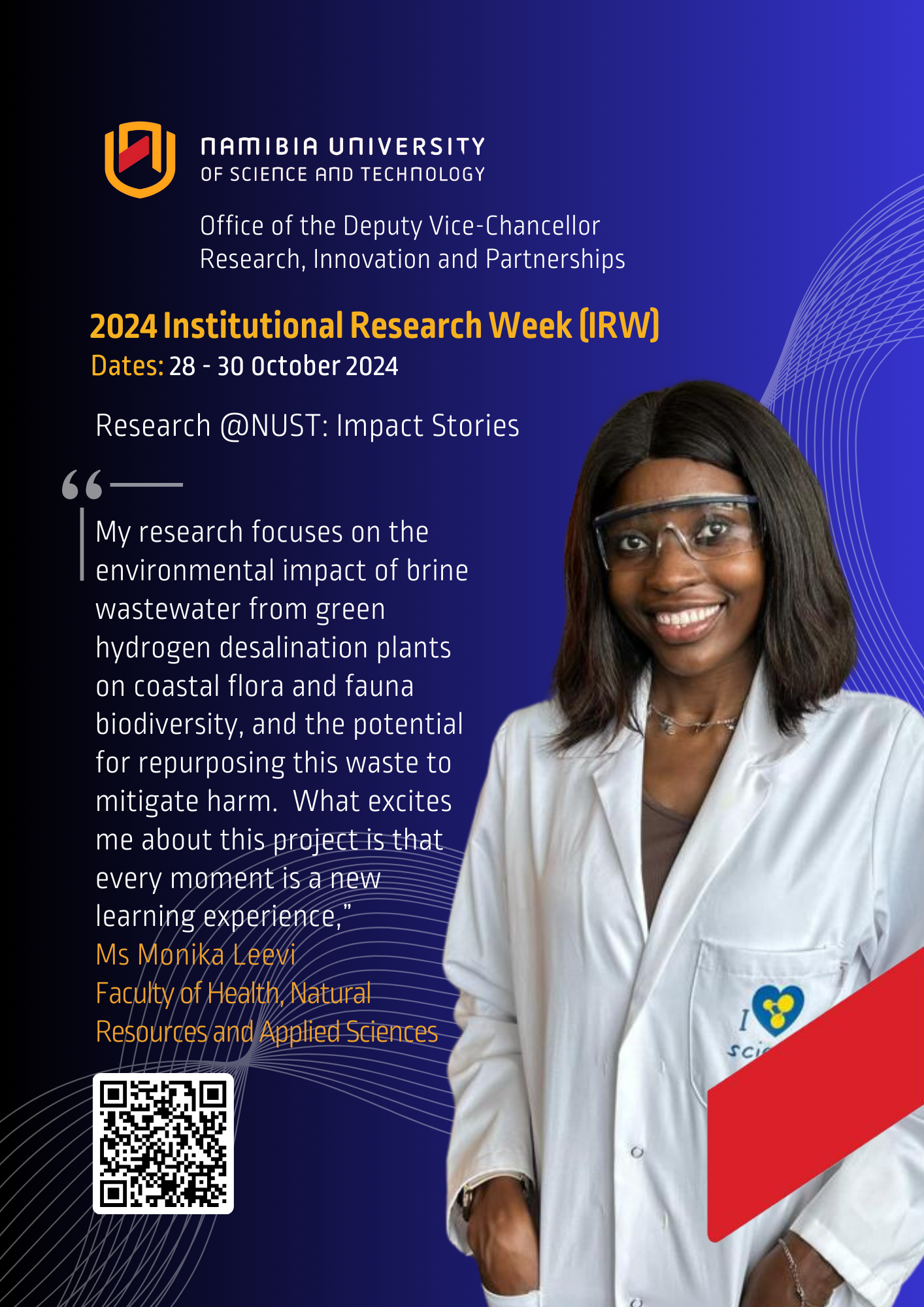Ms Monika Leevi
Faculty of Health, Natural Resources and Applied Sciences
 Q. What your research is about and the problems you wish to solve or have already solved?
Q. What your research is about and the problems you wish to solve or have already solved?
A. My research focuses on the environmental impact of brine wastewater from green hydrogen desalination plants on coastal flora and fauna biodiversity, and the potential for repurposing this waste to mitigate harm. Green hydrogen production, through electrolysis, requires vast amounts of pure water, with desalination producing highly concentrated brine as a byproduct.
If discharged untreated into the ocean, this brine can severely affect marine ecosystems. For example, a 3 GW electrolyser like Hyphen will consume up to 500 tonnes of water per hour, generating nearly the same amount of brine.
This brine, over twice as saline as seawater (Omerspahic, 2022), disrupts the balance of coastal ecosystems, affecting the survival, growth, and metabolism of marine organisms.
Q. Who has been your greatest mentor or influence throughout your academic and research career?
A. It is difficult to single out just one mentor, as several have significantly impacted my academic and research journey. My greatest mentors have been my NUST and German supervisors: Prof Edosa Omoregie and Prof Habauka Kwaambwa, Dr Andy Gradel and Prof Andreas Schmid from Germany.
Their support extended beyond supervision; they played a crucial role in funding my research and offering timely assistance when needed.
Q. What is the impact of this?
A. My research shows that brine wastewater alters species composition and distribution, with tolerant species such as brittle stars and worms persisting, while sensitive species like leeches, algae, and mussels decline. These impacted species are vital to nutrient recycling in aquatic ecosystems. A decline in their populations could disrupt nutrient flow, destabilising the entire coastal ecosystem and triggering far-reaching ecological imbalances. Biodiversity increases further from the outfall, where brine impact is lower. Additionally, high levels of organic matter, caused by environmental stress and oxygen deprivation, lead to anaerobic conditions and plant death near discharge points.
Using ICP-OES and spectrophotometry, I analysed the mineral composition of the brine, finding high concentrations of sodium, magnesium, potassium, and calcium, which pose risks to marine life. However, these same minerals offer opportunities for beneficial extraction. If successful, such extraction could reduce the environmental footprint of brine discharge, potentially converting this waste into valuable resources for agriculture, energy, and mineral applications.
My goal is to explore these solutions, contributing to the sustainability of green hydrogen projects while protecting coastal biodiversity.
Q. What excites you most about your work?
A. What excites me most about my work is exploring how to repurpose harmful brine wastewater into valuable resources, transforming a threat to coastal ecosystems into a sustainable solution. What also excites me about this project is that every moment of research is a new learning experience.
Working with advanced laboratory equipment and technology has been fascinating. I am also passionate about the research topic, as it aligns with my life goals and enthusiasm for environmental sustainability, a subject close to my heart. Additionally, the opportunity to collaborate with experts beyond Namibian and African borders, and gain mentorship from European industry leaders, has been incredibly exciting. Witnessing firsthand how these industries operate was a standout experience during my research journey.

